Yo, yo, YO! Sarah here. I’ve been in major packout mode here but in my few moments of down time I like to fantasize about India. Sometimes these fantasies are amazing (like me spending a month at an ashram a la Eat, Pray, Love) and sometimes these fantasies are more like nightmares (me not being able to eat out because the food is too spicy).
Speaking of spicy food… I was feeling so proud of myself. For months now I’ve been adding chili sauce to one or two dishes a week to try to improve my tolerance for spice. I was like, “Yeah, I got this!” until I read this food primer from our sponsors (who are awesome board-game-playing information junkies just like us!!!):
Maybe the first thing you realize after arriving in Mumbai is that food here is spicy. Like, really spicy. Not just “darn those were some kickin’ wings†spicy, but “now I know how the bad guys at the end of Raiders of the Lost Ark must have felt†spicy.
The realization that takes just a bit longer to dawn is that more or less all the food here is that spicy. Not just the Indian food, and not just the street food, but all the food. You’ve never had penne alfredo that will turn your socks into molten sludge? That’s because you’ve never been to Mumbai.
You try to build a tolerance, but at some point you realize that’s futile because folks here started eating chilis for breakfast, lunch, and dinner from the day they were born, and that literally burns your tongue into invulnerability. But that’s also why trying to get restaurants to tone it down is so tricky – not because of the language barrier, but because they literally can’t conceive of food not being loaded with hot chilis. That’s what makes it food.
So you can see why I was feeling a bit deflated after reading that. But then I read the next segment and that brightened my spirits…
What You Can And Can’t Eat in Mumbai
Mumbai’s restaurant scene rivals any city in America, on almost any axis or dimension. From delightful brewpubs to Neapolitan pizza to burrito delivery to prix fixe luxe to a bewildering variety of down-home options (more on which just below), there’s as much for any Los Angelican or New Yorker or Chicagoan or, yes, Washingtonian to be jealous of here as vice-versa.
This includes, much to many Westerners’ surprise, fabulous Brazilian steak. Every state in India has its own rules regarding the treatment of cows; in Maharashtra, you cannot slaughter a cow, nor can you sell a cow to someone outside Maharashtra for slaughtering purposes. But you can, apparently, import already-slaughtered beef – so, of course, a six-and-a-half-foot-tall track-suited Brazilian entrepreneur (he schmoozes with all the customers) has started a fabulous steakhouse in BKC, flying in frozen top-shelf beef from Argentina. It is not overstating things to say that it has become a pilgrimage site for US Consulate employees.
Pavs, Puris, Pulaos, and ‘Pams
About those down-home options: they rock. Mumbai food is not the Indian food most Westerners are used to – most Indian restaurants in the US are, in fact, north Indian restaurants, serving dishes (or variants on dishes) common in Delhi, Punjab, etc, but increasingly scarce as one moves southwards on the subcontinent. Instead, Mumbai features an intimidating array of excellent south Indian options as well as a number of dishes, especially street snacky stuff, particular to Mumbai.Â
Vada pav. A deep-fried strongly-spiced mashed potato patty in a bun. The word pav comes from the Portuguese pao, meaning bread; it’s a very Western-looking roll that many Westerners make the fatal mistake of eschewing precisely because it doesn’t look local. In fact, it’s perhaps the single food item most closely associated with Mumbai’s polyglot heritage and proletariat history, and of course it’s freaking delicious, it’s deep fried potato, what’s not to like?
Pav bhaji. Another working-class Bombay classic, this is a kind of super-thick vegetable stew/gravy that is eaten using pav itself as an implement. Danger awaits the unsuspecting, however – since it’s red, it’s easy to assume “ah, this is one of those tomato-based gravys, like good old butter chicken or chicken tikka masala.†You only realize it’s actually mostly pureed chilis after you take that first scoop and your eyebrows burst into flames. Still, it’s pretty tasty, if you can hack it.
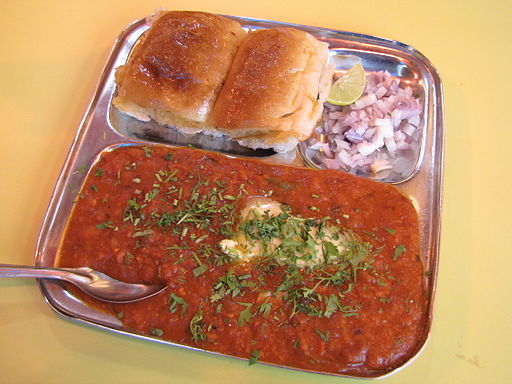
Chaats. This is the real good stuff. Chaat is a catch-all used across the subcontinent for “savory snack;†Mumbai in particular is known for three, all of which are based on puri, a very thin fried bread.
The first is pani puri. This is not just a Mumbai thing, but it is nonetheless super-popular here and a source of pride for the places that specialize in it. Basically, the puri is fried into a thin, crispy, hollow orb somewhere between the size of a golf ball and a tennis ball. You are then given a bunch of stuff, most importantly tamarind water and a bunch of different veggies. Your job is to DIY them into the puri ball, then engulf it in a single gulp. There’s an art to cracking the puri ball just right that’s very satisfying once you have it down. There’s no art whatsoever to scarfing the entire thing at once, but foreigners reluctant to look crude by doing so realize that there is a science to it; if you don’t, the entire contents spill out all over you, embarrassingly marking you as One Who Cannot Correctly Consume The Pani Puri (and also One Who Must Now Change Their Shirt).
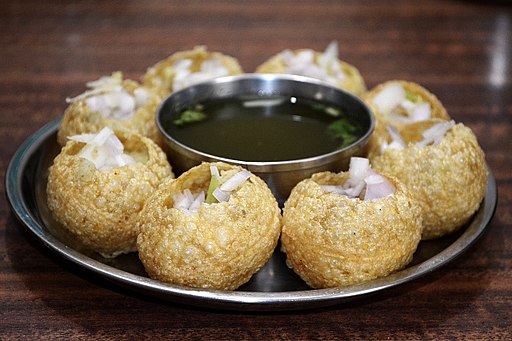
The second is sev puri. This one is Mumbai-specific, and as such is generally the spiciest of the three. Instead of a ball, the puri is fried up into a cracker, and then loaded with a whole bunch of standard pani puri fillings and also chilis because it’s Mumbai and that’s what food is. It’s then topped with “sev,†which are tiny crunchy chickpea noodles. The whole thing is just the right mix of crispy and gooey.
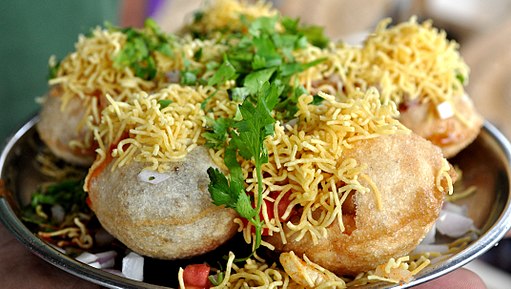
The last is bhel puri. This is the only one that doesn’t use the puri for support. Instead, it’s just a bunch of the toppings from the other puris mentioned above, plus chopped-up puris, plus puffed rice, all tossed together. While second fiddle for both of us, it’s nevertheless very tasty!
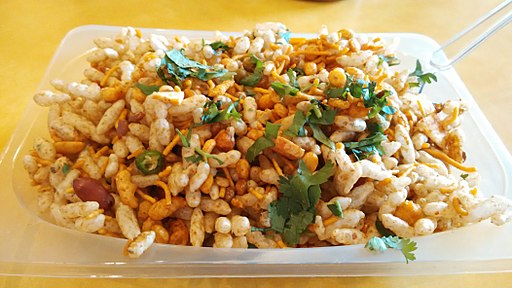
I don’t know about you but I’ve never heard of/eaten a single one of those dishes mentioned above. And also, assuming I am eventually able to handle the spice, how am I going to prevent myself from gaining 100 pounds from all the bread and fried foods?! We’ve definitely got some culinary adventures ahead…
Big thanks to our sponsors Eve & Max for letting me share segments from their beautifully-articulated food primer. I just knew you’d love it. Was too good NOT to share!


